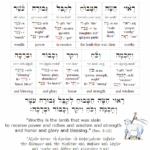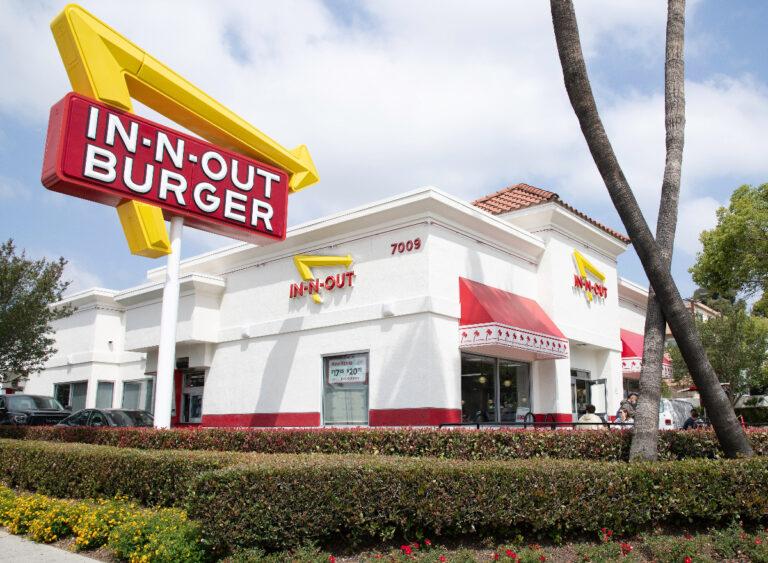.
Your best friend changed to the Keto diet plan and knowledgeable unbelievable results, but when you tried it you didn’t have rather the exact same success. What failed?
It’s a question we encounter all too often and the response is simple– our biochemical uniqueness implies we all have a different makeup and need different things at various times in our lives in order to flourish.
Biochemical individuality is a topic we dive deep into in our upcoming Food Matters Nutrition Certification Program. After all an understanding of this foundational concept is essential to understanding what dietary procedure is best for you.
With a lot of diets offered, each with their own set of guidelines, it can be confusing which is best for you, so after you’ve checked out the program, we’ve concerned the rescue to muffle the white sound and assist you make an educated decision.
Ketogenic (keto) Diet
The Keto diet plan is an ultra-low carb, high-fat diet that is created to put your body into a state called ‘ketosis’ (which suggests your body ends up being more efficient at burning fat as a fuel source). It’s comparable in some respects to previous crash diet you perhaps had actually heard of such as the ‘Atkins’ diet plan.
Dr. Josh Axe suggests limiting your carbohydrate consumption to around 30-50 grams of net carbohydrates daily. To determine net carbohydrates, you subtract the grams of fiber from the overall grams of carbohydrates. To provide you an example of what this appears like, 1.45 cups of blueberries is 25g net carbohydrates, 12 oz (two lots) of kale is 18g net carbs, three cucumbers (30 oz) is 26g net carbohydrates, 8 zucchini (35 oz) is 20g and 5.75 cups (20.5 oz) of broccoli or cauliflower is 16g net carbohydrates.
On the keto diet, high-fiber, low-carb foods are king, so fill up on non-starchy vegetables such as green beans, broccoli, brussels sprouts, leafy greens, cucumber, zucchini, and asparagus; keto fruit such as lemons, limes, blackberries, raspberries, strawberries, watermelon, cantaloupe, nectarines, and peaches; as well as seeds and nuts.
Reducing your carb count forces your body to go searching for other energy sources and kickstarts ketosis. When your body is in a state of ketosis, it moves from burning sugar to burning fat, and this accelerate weight reduction.
When following the keto diet plan, about 75 percent of your day-to-day calories ought to originate from healthy fats such as coconut oil, ghee, grass-fed butter, fatty fish, or olive oil, which acts as an alternative fuel source, and 15 to 20 percent of your calories must come from protein, which assists immune function, tissue repair, and muscle growth.
Before making any significant way of life and diet changes, it’s constantly essential to look for the advice of a health specialist. A research study presented by the American College of Cardiology prompts caution when restricting carbs for weight loss, because they found that when a low proportion of your everyday calories originate from carbs such as grains, fruits, and starchy veggies, you are more likely to establish the common heart rhythm disorder, atrial fibrillation (AFib).
The paleo diet plan draws on the principles and knowledge learned from the Paleolithic lifestyle and applies it to how we live today, to help us eat much better and move more. While many people follow a diet to slim down (which is always a positive if you’re obese), Pete Evans goals to recover your gut wall, bring back digestive function, deal with microbial imbalances, bring back nutrient deficiencies, and support your body’s own pathways of detoxing.
On the paleo diet, you can eat organic, whole, and unprocessed foods such as grass-fed meat, wild-caught fish, pastured free-range poultry and eggs, and greens and non-starchy veggies such as broccoli, tomatoes, cauliflower, and mushrooms. You can also periodically consume nuts, seeds, and fruit.
Grains, legumes, dairy items, alcohol, caffeine, and sugar are to be strictly avoided, this includes walking stick sugar, golden syrup, corn syrup, honey, agave, and maple syrup.
Fasting is among the most burgeoning diet patterns and there are a few variations doing the rounds. When your body is in an periodic fasting state, your blood sugar levels drop and insulin production decreases, which prompts your body to start burning stored energy (carbs), then after 12 hours, when your body runs out of stored energy, it will begin to burn saved fat.
Fasting every other day has actually been shown to help individuals drop weight, however just in the short-term, and it’s not advised to quick for extended periods of time as your body requires vitamins, minerals, and nutrients from food to survive. You can likewise experience dizziness, fatigue, constipation, and dehydration if you fast for a very long time. And if you have diabetes, are pregnant or breastfeeding, or have a chronic disease, you must not fast at all.
Another fasting diet is one that allows you to eat usually for 5 days a week and quickly for two days (nowadays should not be consecutive). On fasting days, women can consume 500 calories and 600 calories for males, this ought to be from 2 small meals and a couple of treats consisting of lean protein, fruit, and veggies, to guarantee your body is still getting the healthy nutrients it requires.
Meanwhile, Dr. Valtar Longo has developed the Fasting Mimicking Diet, which reduces systemic inflammation and minimizes the threat elements of age-related diseases. When on the Fasting Mimicking Diet, you follow a particular meal plan for five days monthly, leaving you to consume freely for the remainder of the month.
The pegan diet plan integrates the best eating principles from both paleo and vegan diets and due to the fact that it is less restrictive than the previously mentioned diet plans, you can follow it forever.
Dr. Mark Hyman, who coined the term, advises your diet plan include 75 percent plants, leaving grass-fed meat to be dealt with as a side meal. This means you must pack up your plate with healthy fats, fruit, and seeds, nuts and veggies and lentils. Seeds and nuts are an important part of the pegan diet due to the fact that they are abundant in protein, minerals, and good fats, lowering the threat of cardiovascular disease and diabetes.
Dr. Hyman suggests preventing grains, vegetables, and veggie oils, and omits dairy due to the fact that, “it adds to obesity, diabetes, heart problem, and cancer and might increase the threat of osteoporosis”.
Drawing on the standard eating routines of communities surrounding the Mediterranean Sea, the Mediterranean diet plan promotes consuming mainly plant-based foods, such as fruit, vegetables, entire grains, vegetables, and nuts; replacing butter with healthy fats such as olive oil; using herbs and spices instead of salt as taste; only eating red meat a couple of times a month; consuming fish and poultry at least twice a week; and drinking red wine in small amounts.
Research reveals that following the standard Mediterranean diet plan lowers your risk of heart disease and avoids significant persistent illness. And since the diet plan is abundant in fiber, it can slow your body’s absorption of sugar and help improve blood sugar level levels and ultimately assist you preserve a healthy weight.
The facility behind the Whole30 diet plan is to remove inflammatory and unhealthy food groups for 30 days to assist increase your energy levels, shift weight you’ve been attempting to lose, and rid yourself of any worrying pains and pains.
This means you require to eliminate sugar, alcohol, grains, legumes, and dairy (ghee or clarified butter are accepted). You are likewise prohibited from junk foods, even if they’re made with approved ingredients because Whole30 aims to encourage a healthy lifestyle and stimulate long term change.
The other major difference with this diet plan is that you’re forbidden from weighing yourself or taking any body measurements because Whole30 has to do with more than just reducing weight.
Raw Food Diet
The raw food diet is primarily made up of unprocessed and raw fruit, veggies, nuts, seeds, grains, beans, and seaweed. To categorize as raw, nothing can be prepared above 115 degrees Fahrenheit, pasteurized, or fine-tuned. While a lot of raw foodists are vegan, some followers do take in dairy, meat, and seafood, as long as it stays listed below 115 degrees.
The benefits of following the raw food diet are that it is low in sodium and keeps your blood pressure in check thanks to all of the vegetables and fruit you’ll eat, however, raw food does not have lots of important nutrients including protein, calcium, vitamin, and iron B12.
In Conclusion …
Diet fads reoccur. We’ve seen that since the 80’s when we first developed an addiction to the ‘diet plan du jour’. However, there are 2 things I think about vitally important when examining what you put in your mouth daily:
1. Sound judgment
If Mother Nature made it, eat it. If it’s made in a laboratory or needs significant human intervention, limit your intake or cut it out.
I support the concept of becoming a ‘qualitarian’ and focusing more on the quality of our food; consuming lots of fresh vegetables that are grown locally, in season, and organic; integrating healthy fats into your diet plan and consuming a moderate amount of grains. I’m likewise a fan of doing a cleanse every once in a while when you feel like your body requires a reset.
2. What do the longest living healthiest individuals on earth eat today?
Thanks to research into the earliest lived neighborhoods around the globe called ” Blue Zones” we know more about what causes long-lasting health than ever in the past. The majority of the communities studied consumed a diet high in veggies, exercise or partook in exercise regularly, spent quality time with friends and family and lived in a multi-generational neighborhood environment. So it’s most likely your grandmother was right.
If you have a natural passion for healthy food, natural therapies, and motivating others, you seem like the best future nutrition coach! Registrations are now open for the next intake of our Food Matters Nutrition Certification Program; find the curriculum here.
This content was originally published here.
Your finest good friend switched to the Keto diet and skilled extraordinary results, however when you tried it you didn’t have quite the same success. The Keto diet is an ultra-low carbohydrate, high-fat diet that is designed to put your body into a state called ‘ketosis’ (which means your body becomes more effective at burning fat as a fuel source). The paleo diet draws on the principles and knowledge found out from the Paleolithic way of life and uses it to how we live today, to help us eat better and move more. On the paleo diet, you can eat natural, entire, and unprocessed foods such as grass-fed meat, wild-caught fish, pastured free-range poultry and eggs, and greens and non-starchy vegetables such as broccoli, tomatoes, cauliflower, and mushrooms. I support the concept of ending up being a ‘qualitarian’ and focusing more on the quality of our food; eating lots of fresh veggies that are grown locally, in season, and natural; incorporating healthy fats into your diet plan and consuming a moderate quantity of grains.



















